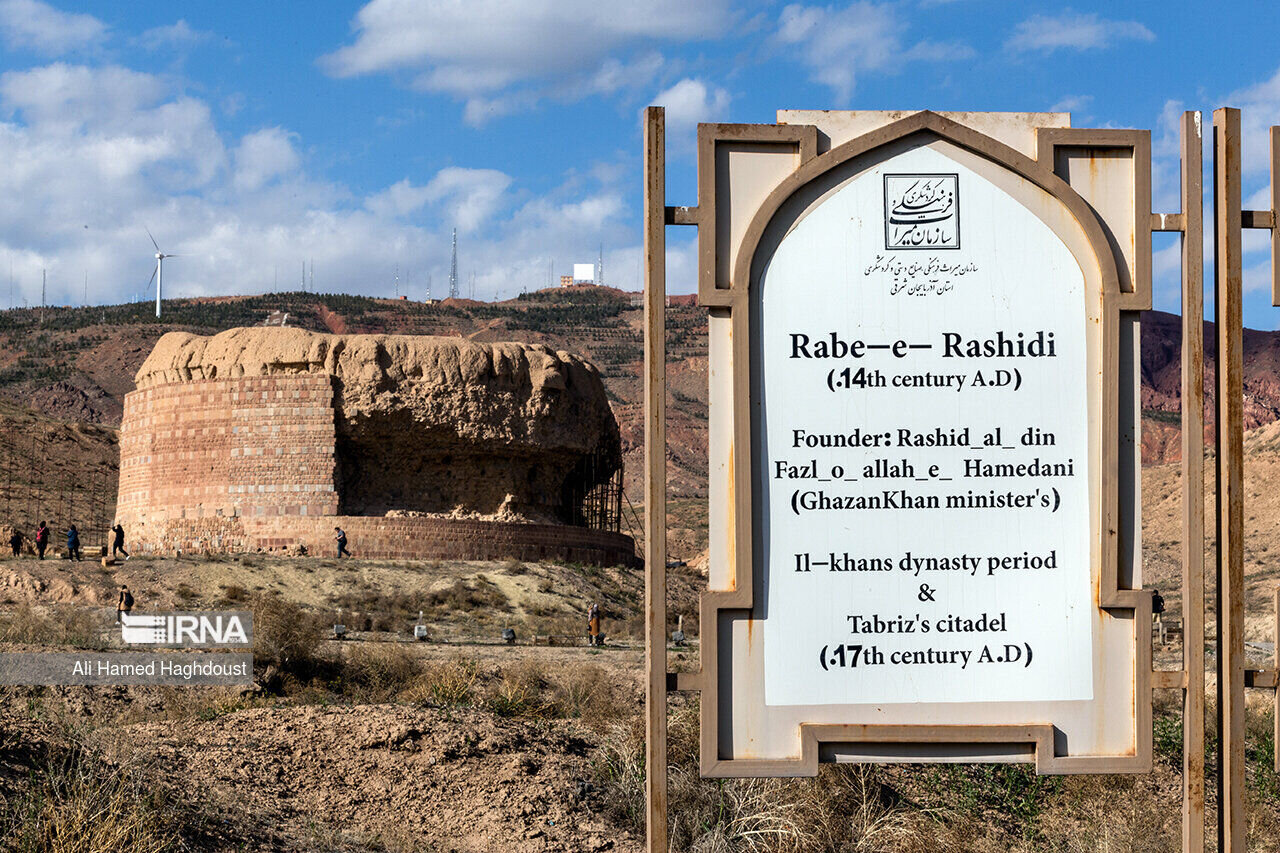Remains of hydraulic system found at 700-year-old educational complex in northwest Iran

TEHRAN – Archaeologists have found a cistern and irrigation network believed to be benefited from a hydraulic system for supplying water to Rab’-e Rashidi, an educational complex dating back to the 14th century.
Archeological evidence shows signs of hydraulic engineering (water and water structures) within Rab’-e Rashidi complex, IRNA quoted a local cultural heritage expert as saying on Monday.
“The presence of water hydraulic engineering in this place is considered a strange and unique sign of the technology of that era,” Dr. Bahram Ajorlu explained.
According to the available documents and evidence, the water was brought to the educational complex from nearby rivers via man-carved channels on the mountain slopes and based on mechanical instructions, the expert said.
He confirmed the existence of drinking water piping in Rab’-e Rashidi, the report added.
“Moreover, the excavators found a water channel, which was filled due to a terrible earthquake of more than 7 Richter.”
Iran’s cultural heritage body keeps an eye on a possible inscription of the ruins of Rab’-e Rashidi on the UNESCO World Heritage list by 2025.
The educational complex was established during the reign of Ghazan, a ruler of the Ilkhanid dynasty. It embraces a paper factory, a library, a hospital (Dar-al-Shafa), a Quranic center (Dar-al-Quran), residential facilities for teachers, students’ quarters, and a caravanserai amongst other facilities.
The Cultural Heritage and Tourism Research Center in collaboration with Tabriz Islamic Art University has recently completed the first chapter of an international project that lays the basic groundwork for UNESCO recognition.
Rab’-e Rashidi includes several archaeological layers that date from Ilkhanid, Safavid, and Qajar eras. experts believe that students from Iran, China, Egypt, and Syria studied there under the supervision of physicians, intellectuals, scientists, and Islamic scholars.
Tabriz, the capital of East Azarbaijan, embraces several historical and religious sites, including the Jameh Mosque of Tabriz and Arg of Tabriz, and the UNESCO-registered Tabriz Historic Bazaar Complex, to name a few. The city became the capital of the Mongol Il-Khan Mahmud Gazan (1295–1304) and his successor. Timur (Tamerlane), a Turkic conqueror, took it in 1392. Some decades later, the Kara Koyunlu Turkmen made it their capital. It was when the famous Blue Mosque was built in Tabriz.
AFM
Leave a Comment